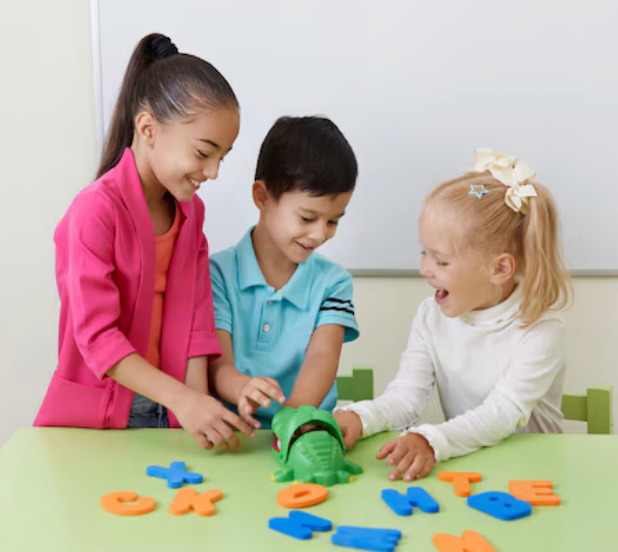
The Best Multi-Sensory Reading Strategies for Kids
The Best Multi-Sensory Reading Strategies for Kids with Dyslexia
Reading can be frustrating for children with dyslexia, but the right approach can change everything. Multi-sensory reading strategies—which engage sight, sound, touch, and movement—help kids learn in ways that make sense to them.
As a teacher, I’ve seen students light up when they’re allowed to move, touch, and speak through a lesson instead of sitting silently with a worksheet. These strategies don’t just teach letters and sounds. They build confidence, reduce frustration, and make reading feel possible.
This guide explores why multi-sensory learning is so effective for dyslexic readers and provides practical, hands-on strategies you can try at home or ask about in school.
Why Multi-Sensory Learning Works for Dyslexia
Dyslexia is a language-based learning difference that can affect:
✔ Recognizing letters and connecting them to sounds
✔ Blending sounds into words
✔ Reading fluently and with comprehension
Multi-sensory learning helps because it:
✔ Activates multiple parts of the brain at once (Yale Center for Dyslexia & Creativity)
✔ Strengthens memory by pairing visual, auditory, and tactile input
✔ Makes learning more engaging and less stressful
The Orton-Gillingham approach, widely considered the gold standard for dyslexia intervention, is multi-sensory, structured, and sequential. It helps children learn at their own pace while reinforcing skills through repetition.
👉 Related: Early Signs of Dyslexia Every Parent Should Know.
1. Tactile Letter Exploration
Children with dyslexia benefit when they can feel and manipulate letters, not just look at them on a page.
Try this:
-
Use textured alphabet cards, sandpaper letters, or DIY clay letters.
-
Have your child trace the letter shape while saying its sound.
-
Use a mirror so they can watch their mouth form the sound.
-
Ask questions: Where’s your tongue? Does your throat vibrate?
📌 Why it works: Connecting movement, touch, and speech makes letter-sound connections stick.
2. Sky Writing & Air Tracing
Big body movements reinforce memory.
Activity:
-
Say a sound and have your child “write” the letter in the air with their finger.
-
Encourage them to say the sound while moving.
-
Follow up with tracing on textured paper or sandpaper letters.
This kinesthetic approach links sound, shape, and motion together.
3. Sound Blending with Movement
Blending is one of the hardest skills for kids with dyslexia. Movement can help.
Activity:
-
Write sounds or word parts on sticky notes.
-
Place them on the floor and have your child hop from sound to sound.
-
Example: for sun, they hop on s → u → n while saying each aloud.
4. Sensory Writing
Replace pencil-and-paper drills with sensory play.
Activity:
-
Fill a tray with rice, sand, or shaving cream.
-
Say a sound and have your child “write” the letter in the tray while saying it aloud.
This combines touch, sight, and sound for deeper retention.
5. Color-Coded Word Building
Visual supports help kids distinguish sounds.
Activity:
-
Use one color for vowels and another for consonants.
-
Build words with magnetic letters or tiles.
-
Have your child trace and say each sound.
This reduces confusion and strengthens recognition.
6. Rhythmic Reading: Tapping & Clapping
Adding rhythm makes decoding more structured and fun.
Activity:
-
Say a word and have your child tap a finger for each sound.
-
Example: cat = tap /c/ → /a/ → /t/, then slide fingers across to blend.
👉 Related: How to Support a Child with Dyslexia at Home.
7. Storytelling for Comprehension
Even before reading fluently, kids can build comprehension through oral language.
Activity:
-
Use a picture book with no words.
-
Ask your child to describe what’s happening.
-
Guide them with sequencing questions (“What happens next?”).
This builds vocabulary and narrative skills that support later reading.
8. Music & Rhythm for Phonemic Awareness
Songs and chants reinforce letter-sound relationships.
Activity:
-
Create a chant for each sound (e.g., “B says /b/, like ball, bat, bubble”).
-
Clap or stomp to keep rhythm.
Music helps children internalize phonics rules in an enjoyable way.
Final Thoughts: Multi-Sensory Learning Builds Confidence
For children with dyslexia, learning to read doesn’t have to mean endless frustration. With multi-sensory strategies—tactile, auditory, visual, and kinesthetic—children can connect sounds to letters, blend words, and build confidence step by step.
At Soaring Minds, we believe every child deserves tools that make learning accessible and joyful. That’s why we create multisensory resources for families and educators to bridge the gap between school and home.
👉 Want more strategies? Explore these parent guides:
And for research-based background, see the International Dyslexia Association.
